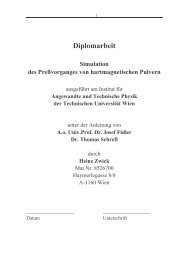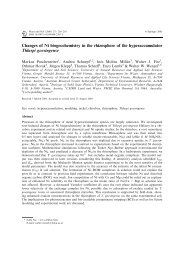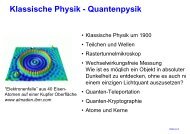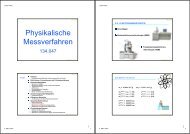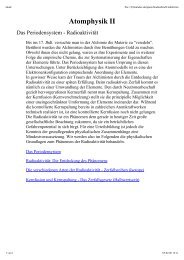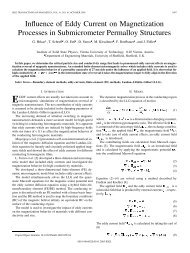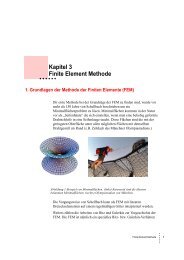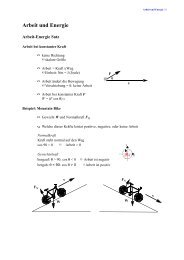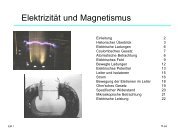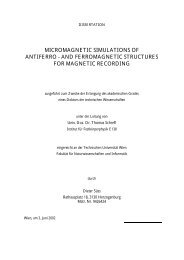Read Back Signals in Magnetic Recording - Research Group Fidler
Read Back Signals in Magnetic Recording - Research Group Fidler
Read Back Signals in Magnetic Recording - Research Group Fidler
Create successful ePaper yourself
Turn your PDF publications into a flip-book with our unique Google optimized e-Paper software.
4 Numerical MethodsEquation<br />
Numerical Methods<br />
Section (Next)<br />
Micromagnetic simulations require a discrete representation of the cont<strong>in</strong>uous magnetization<br />
distribution on a computer. Due to the strong ferromagnetic coupl<strong>in</strong>g the magnetization does<br />
not vary rapidly over short distances. So the discretization size can be much larger than the<br />
atomic lattice constant. Usual lengths of significant magnetization changes (widths of doma<strong>in</strong><br />
walls) are <strong>in</strong> the order of some nanometers for hard magnetic materials, for soft magnetic<br />
materials even one or two orders of magnitude larger. To keep numerical errors small, the<br />
discretization size should be smaller than the doma<strong>in</strong> wall widths.<br />
Dynamic micromagnetic calculations require two major tasks. The first part is to calculate the<br />
stray field. For this purpose a partial differential equation (PDE) of the form<br />
Lu [ ( r)] = s(<br />
r )<br />
(4.1)<br />
has to be solved. Here L denotes the differential operator, s is called source term and u is the<br />
unknown function, which fulfills this PDE. For stray field calculations u represents the<br />
magnetic potential. We also have to solve an equation of type (4.1) for the electric potential of<br />
an <strong>in</strong>homogeneous conductor (see (2.31)). For this purpose the F<strong>in</strong>ite Element Method is<br />
used.<br />
As second task we have solve an <strong>in</strong>itial-value problem (IVP) of the form:<br />
y� = f(, t y), y( t ) = y . (4.2)<br />
0 0<br />
In case of the LLG equation y represents the magnetization. Therefore y 0 would be the <strong>in</strong>itial<br />
magnetization. Here the time has to be discretized. We use a time <strong>in</strong>tegration rout<strong>in</strong>e, which<br />
automatically adapts the time steps. So for fast physical processes a smaller time step is<br />
chosen to <strong>in</strong>crease accuracy.<br />
41



